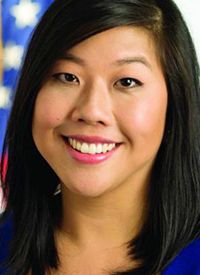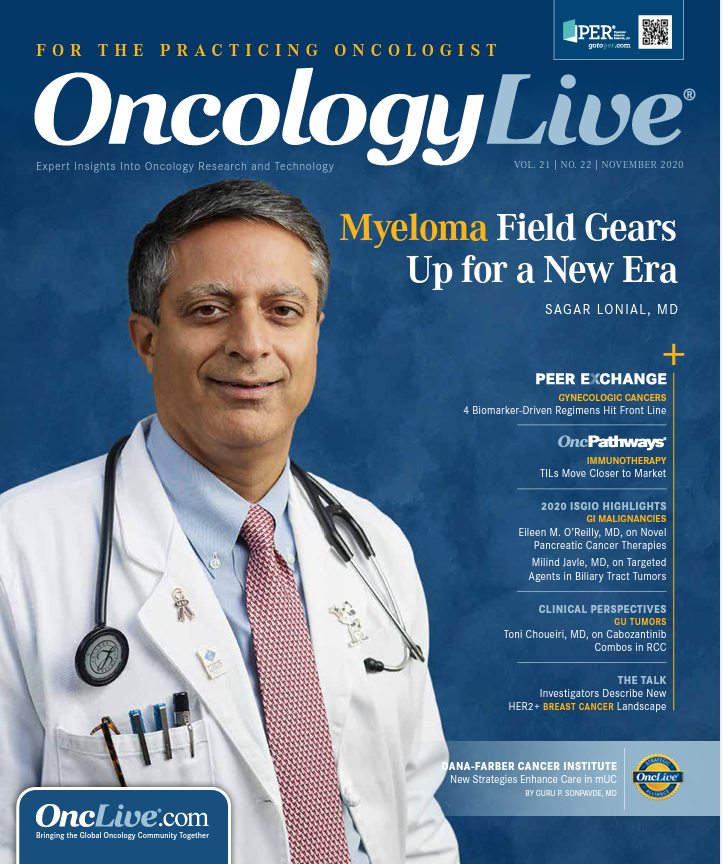Infrastructure of Oncology Care Model Helps Practice Through COVID-19
Nothing about taking care of patients with cancer during the coronavirus disease 2019 pandemic has been easy, but those practices that had already embraced transformation under the Oncology Care Model are finding that its monthly payments and other features offer stability during an unprecedented health emergency.
Alexandra Chong, PhD

Nothing about taking care of patients with cancer during the coronavirus disease 2019 (COVID-19) pandemic has been easy, but those practices that had already embraced transformation under the Oncology Care Model (OCM) are finding that its monthly payments and other features offer stability during an unprecedented health emergency.
That’s what Alexandra Chong, PhD, lead for the OCM within the Center for Medicare and Medicaid Innovation (CMMI), told the hundreds of online attendees at the 9th annual meeting of Patient-Centered Oncology Care®, presented virtually on September 25, 2020, by the American Journal of Managed Care®. The meeting engaged leaders from the payer, academic, and patient advocacy communities to discuss issues on patient-centered oncology care.
“We are living in a totally different world,” said event cochair Kashyap Patel, MD, CEO of Carolina Blood and Cancer Care Associates of Rock Hill, South Carolina, as he introduced Chong. “What we are learning is how COVID-19 impacts not just us as [to] what we do in the office, but how it impacts the rapid adaptation and changes from the payer perspective.”
Chong spent much of her talk walking attendees through the fine points of the OCM, which had been poised to transition toward Oncology Care First (OCF), a next-generation model built on a bundled-payment framework instead of fee for service (FFS).
As Chong explained, due to COVID-19, the OCM has been extended another year through 2022, and the CMMI has not yet fleshed out the details of OCF. OCM is an episode-based model, Chong said, that attaches 2 reimbursement elements to each practice’s commitment to reach certain financial and quality benchmarks while meeting practice standards that include having 24/7 access to medical records and developing care and survivorship plans with patient input. Although the number of practices in the OCM is 138, the number of physicians involved exceeds 7000, and the model now reaches 150,000 Medicare patients each year, or about a quarter of all FFS beneficiaries.
Practices in the OCM receive $168 per patient per month in Monthly Enhanced Oncology Services (MEOS) for delivering this higher-level care, as well as Performance- based Payments (PP), which come after each 6-month evaluation period ends.
As Chong explained, the work practices undertook to redesign their business for the high-touch requirements of the OCM was not easy—and it was a learning process for both sides.
But it’s paying dividends now. Practices that rely on administering expensive therapies—and having new patients walk through the door—have seen revenue plummet as people skip cancer screenings.
Those in the OCM have had some lifelines extended to them.
“We decided to retain the billing and keep up those MEOS payments, because we have heard across all of our practices, or majority of our practices, that a lot of the infrastructure that was put into place for the implementation of OCM has really helped our practices in terms of still achieving or still...focusing their care on their beneficia- ries,” Chong said.
To be sure, the OCM is not perfect, and Chong said the CMMI has heard the message from participating physicians that it must rethink reporting requirements and turn- around performance data in a time frame that lets practices fix problems quickly.
Because of COVID-19, the CMMI has made some data reporting requirements optional during the Public Health Emergency, including aggregate quality measure reporting and beneficiary-level clinical and staging data reporting.
“A majority of our practices still reported on these data, even though it was optional,” Chong noted.
Before COVID-19 hit, according to Chong, the OCM was gaining momentum as it headed into its final year. A third of the practices in the model had agreed to take on 2-sided risk or “some type of downside risk,” she said.
By embracing the tools that make the OCM work, Chong continued, “Participants have been able to not lose that momentum in providing the high-quality care that they had committed to giving their beneficiaries.”
From The OCM To The OCF
Patel led a panel discussion on shifting from the OCM to the OCF, which featured Aaron Lyss, director of strategic payer relations, OneOncology; Terrill Jordan, president and CEO, Regional Cancer Care Associates; Mariam Alboustani, manager, Pharmacy Services, Blue Cross Blue Shield of Michigan; and Randall A. Oyer, MD, Lancaster Cancer Center/Penn Medicine.
Patel likened the OCM to an architect’s blueprint of how cancer care should work, one into which participants have put time and resources to build. He launched the panel discussion by asking what the OCF should look like when fully presented.
Jordan said the ground has shifted with COVID-19 and the CMMI must acknowledge that the population that comes through the door post pandemic will be different. “We will have to think about that, and challenge CMS/CMMI to take that into account appropriately,” he said.
The CMMI had a brief stakeholders’ meeting November 4, 2019, to discuss its OCF outline, Patel said, but there has been little information forthcoming since then. Oyer said the concerns among practices remain: physicians worry about improving outcomes, decreasing administrative burden, and maintaining revenue.
“We are also concerned about what our patients are facing, making access avail- able to people across our entire community, [and] providing quality outcomes and patient experience. And then we’re all concerned about our organizations—we work in these organizations.”
In terms of financial stability at the practice level, he said, it’s hard to deliver good care and be a community resource. Doing things the right way depends on having the resources to build a good team, Oyer said.
“One of the really good things that came out of OCM for us was that everybody on the team understood their value.”
Like Jordan, Oyer values transparency. “People see a line of sight between what they do in their daily practice and what results they want to accomplish.”
Lyss noted that achieving buy-in throughout an organization was important for success in the OCM and will be even more so in the OCF. The challenges ahead only become surmountable, he said, “through a culture throughout the organization that is committed to value and that is committed to evolve, adapting to change.”
Practice transformation “is going to take time. It’s going to be really hard; there are no shortcuts,” he continued.
Alboustani said her payer is working with practices on the data-sharing challenges
of the OCM, but that success in shifting to value-based care is not just about an indi- vidual model, it’s about recognizing that value-based care is not going away. “It’s not a phase. It’s probably going to become the norm down the line—and we all have to collaborate. We all have to work better in making this efficient for everyone—for the patient, for the plan, and for the provider.”
As practice transformation evolves, so must the concept of shared savings, Jordan said. Practices cannot keep squeezing savings out of the practice of oncology, and it’s a reason why some have left the OCM even as they embrace its transformation principles.
“The idea that you’re essentially judged against or measured against your own historic performance, I think is a real problem,” he said. “You should get measured against the market that you’re in. The variability in those markets is significant.”




